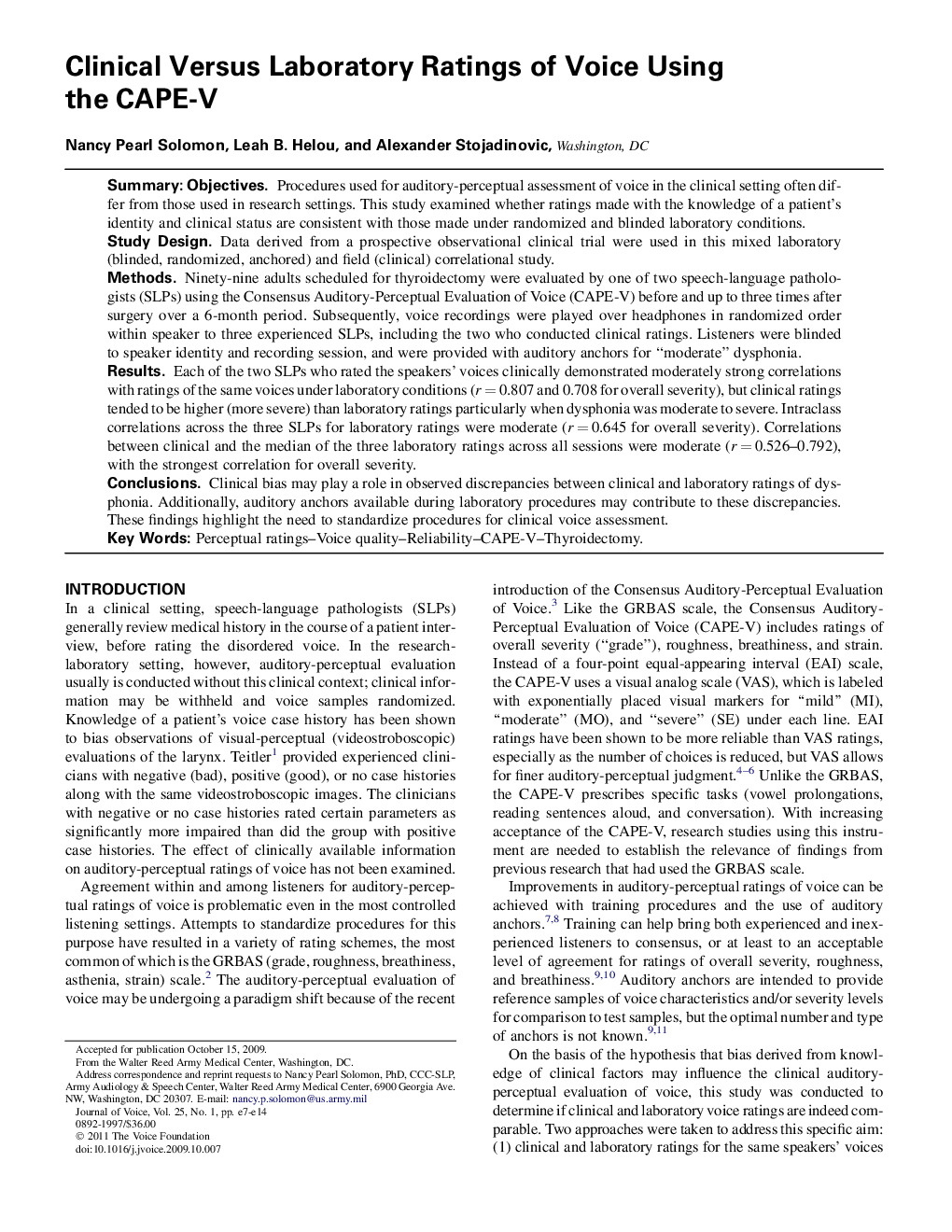| کد مقاله | کد نشریه | سال انتشار | مقاله انگلیسی | نسخه تمام متن |
|---|---|---|---|---|
| 1102632 | 953610 | 2011 | 8 صفحه PDF | دانلود رایگان |

SummaryObjectivesProcedures used for auditory-perceptual assessment of voice in the clinical setting often differ from those used in research settings. This study examined whether ratings made with the knowledge of a patient's identity and clinical status are consistent with those made under randomized and blinded laboratory conditions.Study DesignData derived from a prospective observational clinical trial were used in this mixed laboratory (blinded, randomized, anchored) and field (clinical) correlational study.MethodsNinety-nine adults scheduled for thyroidectomy were evaluated by one of two speech-language pathologists (SLPs) using the Consensus Auditory-Perceptual Evaluation of Voice (CAPE-V) before and up to three times after surgery over a 6-month period. Subsequently, voice recordings were played over headphones in randomized order within speaker to three experienced SLPs, including the two who conducted clinical ratings. Listeners were blinded to speaker identity and recording session, and were provided with auditory anchors for “moderate” dysphonia.ResultsEach of the two SLPs who rated the speakers' voices clinically demonstrated moderately strong correlations with ratings of the same voices under laboratory conditions (r = 0.807 and 0.708 for overall severity), but clinical ratings tended to be higher (more severe) than laboratory ratings particularly when dysphonia was moderate to severe. Intraclass correlations across the three SLPs for laboratory ratings were moderate (r = 0.645 for overall severity). Correlations between clinical and the median of the three laboratory ratings across all sessions were moderate (r = 0.526–0.792), with the strongest correlation for overall severity.ConclusionsClinical bias may play a role in observed discrepancies between clinical and laboratory ratings of dysphonia. Additionally, auditory anchors available during laboratory procedures may contribute to these discrepancies. These findings highlight the need to standardize procedures for clinical voice assessment.
Journal: Journal of Voice - Volume 25, Issue 1, January 2011, Pages e7–e14